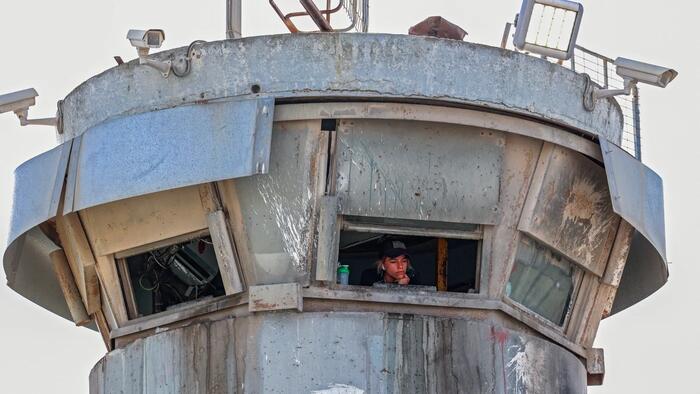The Israeli military is reportedly set to enhance its presence in the occupied West Bank by deploying remotely controlled automated weapons known as “Roeh-Yoreh,” or “See-Fires.” Developed by Rafael Advanced Defense Systems, this advanced weaponry consists of surveillance towers equipped with a lethal fire mechanism that can be controlled remotely. The system has primarily been used in Gaza since its introduction in 2008, where it has aimed to prevent incursions by Palestinians approaching the Israeli security fence. The Israeli Army Radio’s recent report highlights the military’s decision to expand its deployment to the West Bank despite concerns about the system’s limited effectiveness, particularly noted during the Hamas-led attacks on October 7, when drones easily disabled the towers.
As part of a strategic response, the Israeli military plans to install these remote weapon systems in several key locations throughout the West Bank, focusing on entrances to illegal settlements and other vital control points. Manufacturing for these systems aimed at the West Bank has already commenced, and the initial installations will prioritize high-risk areas believed to be susceptible to armed attacks. The use of the Roeh-Yoreh systems will be managed by the 636 Reconnaissance Unit of the West Bank Division, driven by increasing anxiety regarding rising security threats in the territory, particularly following the October war in Gaza.
Settlement expansion in the West Bank has long been a contentious issue, with approximately 700,000 Israeli settlers living in around 300 illegal settlements in the region since the 1967 war. Under international law, this construction is considered illegal. Nonetheless, the Israeli government continues to support and expand these settlements, intensifying tensions with the Palestinian population. The deployment of automated weapons at these settlements suggests a shift towards more aggressive measures to secure Israeli interests in the increasingly volatile region, where incidents of violence and unrest have escalated since Israel’s war on Gaza began in October.
In the aftermath of the initial conflict in Gaza, records indicate that violence against Palestinians in the West Bank has surged alarmingly. Reports from Palestinian health officials indicate that over 800 Palestinians in the West Bank have been killed by Israeli military actions since the onset of the war, with thousands more sustaining injuries. This spike in casualties indicates a severe deterioration of security and human rights in the region, further complicating an already tense situation and contributing to an atmosphere of fear and retaliation among the affected populations.
The decision to add the Roeh-Yoreh systems to the military’s arsenal comes at a time of heightened security concerns within Israeli leadership circles. The military has expressed the need to reinforce defense mechanisms against potential infiltration by armed groups and attacks directed at settlements. However, the implementation of automated systems raises significant ethical questions regarding the implications of remote warfare on civilian populations and the potential for indiscriminate violence, as these weapons operate without human judgment in high-stakes situations.
Ultimately, the deployment of remote-controlled automated weapons in the West Bank marks a troubling escalation in the ongoing conflict between Israel and the Palestinians. The use of advanced military technology in populated civilian areas could lead to further loss of life and increase tensions, undermining any efforts toward achieving a lasting peace. The international community may need to reevaluate its stance on arms sales and military support as the region faces rising human rights violations amid an unstable security environment. The situation necessitates urgent attention to address the broader implications of such military strategies on both the Israeli and Palestinian populations.

